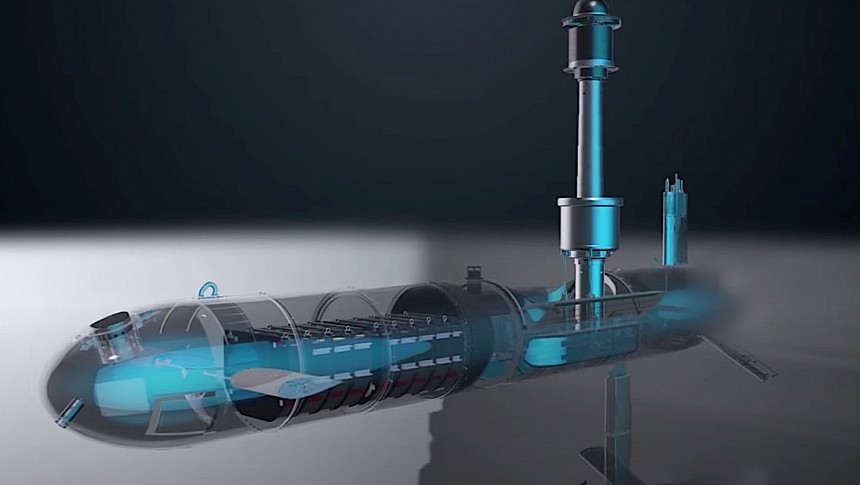The war still raging in Ukraine has made it painfully clear to anyone that the future of warfare comes in the form of drones and other autonomous systems. Over there, both the Russians and Ukrainians are using them not only for combat operations, but also for intelligence gathering.
Most of the hardware of this type used on the front lines comes in the form of aerial assets. Sure, ground and even underwater drones are deployed in military operations, but these are far less common and visible as their aerial counterparts.
As more and more nations are developing such systems though, it's likely future wars will make non-aerial military systems far more common.
One of the latest entries in the world of underwater drones is the BlueWhale. Developed by defense contractor IAI, the thing is described as Israel's first unmanned submarine.
The sub has been in the works for a while, even if it's only now we're hearing about it. The full specs in terms of capabilities have not been released, but we have enough info on it to paint a pretty picture of that for our selves.
With a diameter of a little over one meter and a length of almost 11 meters (3 and 36 feet, respectively), the BlueWhale is small enough to fit inside a 40-foot shipping container and light enough to be transportable by means of land, air or sea methods.
It is powered by an electric system that gives it an autonomy of up to four weeks. The thing moves through the water safely, without hitting anything, thanks to data fed by a series of sensors placed around it. It does so at speeds that can be as high as eight mph (13 kph) while submerged.
The thing was not designed as an attack ship, but as a tool to gather intel about the enemy. For that to work it is packed full with detection hardware.
A mast "several meters high" is where the electro-optical systems of the sub are located. These are used to detect sea and coastal targets, be it enemy submarines or something else.
Towed behind the BlueWhale come dedicated sonars for the detection of submarines and mines. The towed sonars too are "several tens of meters long," and are backed in their mission by a dedicated synthetic aperture sonar attached to the sides.
Whatever the submarine finds on enemy positions and capabilities is sent back to its operators, in real time, by means of a satellite communications antenna installed on the mast.
IAI does not say how far along the development of the BlueWhale is, but given how it made public some details about it point to operational readiness just around the corner.
Without us knowing, the sub has already underwent "thousands of hours of submerged and autonomous operation" in undisclosed waters.
As more and more nations are developing such systems though, it's likely future wars will make non-aerial military systems far more common.
One of the latest entries in the world of underwater drones is the BlueWhale. Developed by defense contractor IAI, the thing is described as Israel's first unmanned submarine.
The sub has been in the works for a while, even if it's only now we're hearing about it. The full specs in terms of capabilities have not been released, but we have enough info on it to paint a pretty picture of that for our selves.
With a diameter of a little over one meter and a length of almost 11 meters (3 and 36 feet, respectively), the BlueWhale is small enough to fit inside a 40-foot shipping container and light enough to be transportable by means of land, air or sea methods.
It is powered by an electric system that gives it an autonomy of up to four weeks. The thing moves through the water safely, without hitting anything, thanks to data fed by a series of sensors placed around it. It does so at speeds that can be as high as eight mph (13 kph) while submerged.
The thing was not designed as an attack ship, but as a tool to gather intel about the enemy. For that to work it is packed full with detection hardware.
A mast "several meters high" is where the electro-optical systems of the sub are located. These are used to detect sea and coastal targets, be it enemy submarines or something else.
Towed behind the BlueWhale come dedicated sonars for the detection of submarines and mines. The towed sonars too are "several tens of meters long," and are backed in their mission by a dedicated synthetic aperture sonar attached to the sides.
Whatever the submarine finds on enemy positions and capabilities is sent back to its operators, in real time, by means of a satellite communications antenna installed on the mast.
IAI does not say how far along the development of the BlueWhale is, but given how it made public some details about it point to operational readiness just around the corner.
Without us knowing, the sub has already underwent "thousands of hours of submerged and autonomous operation" in undisclosed waters.









